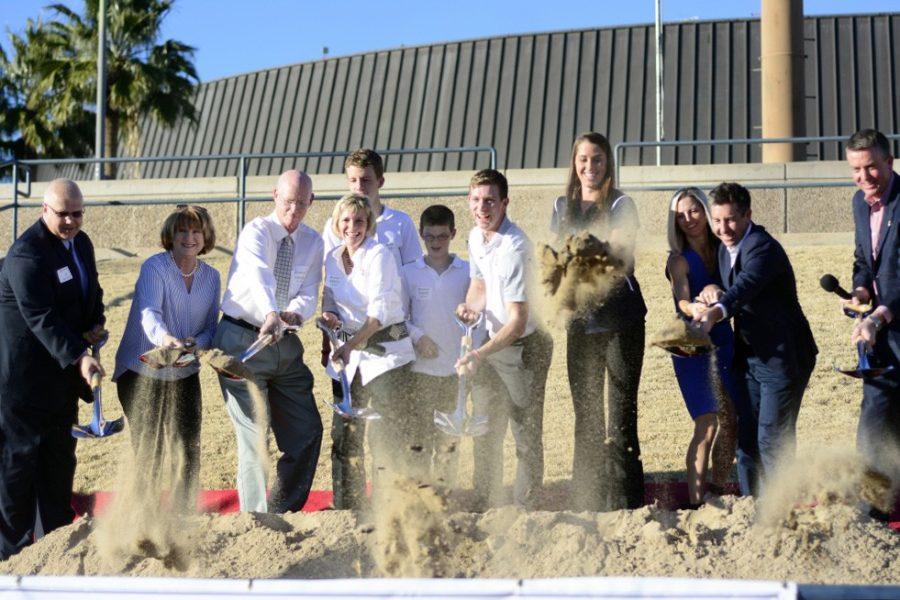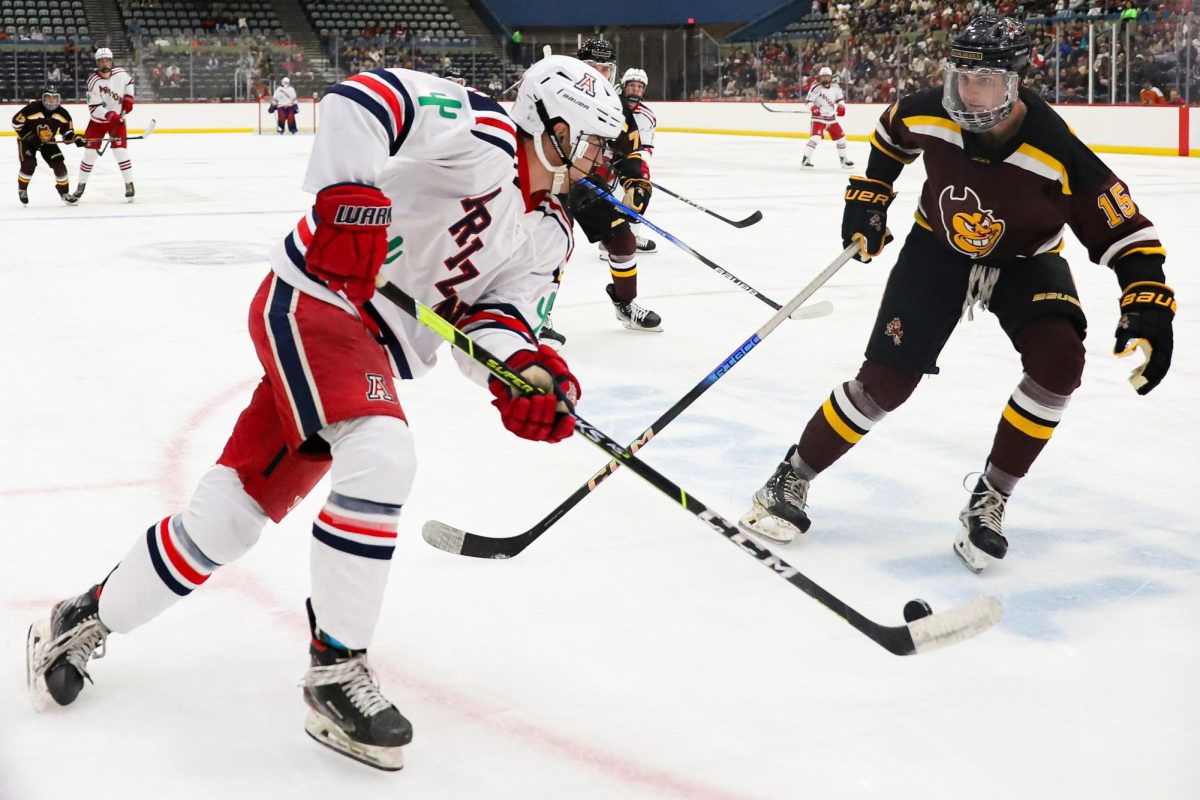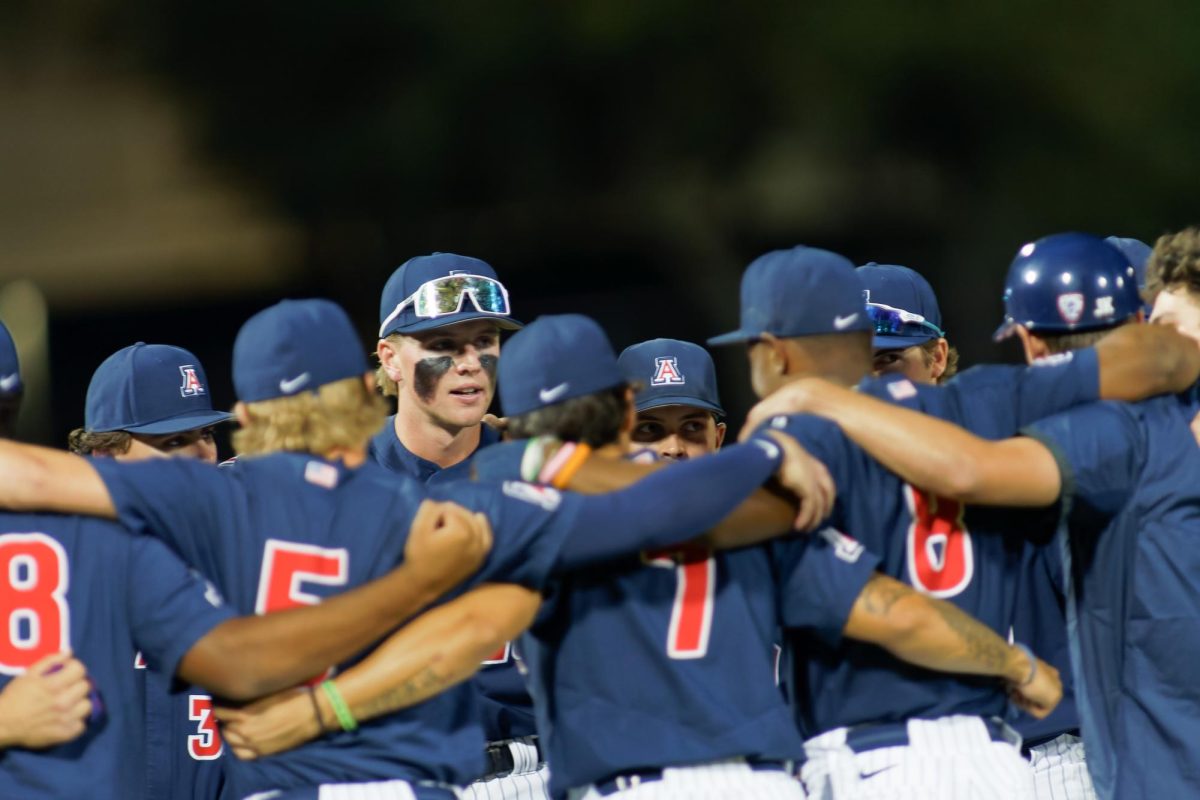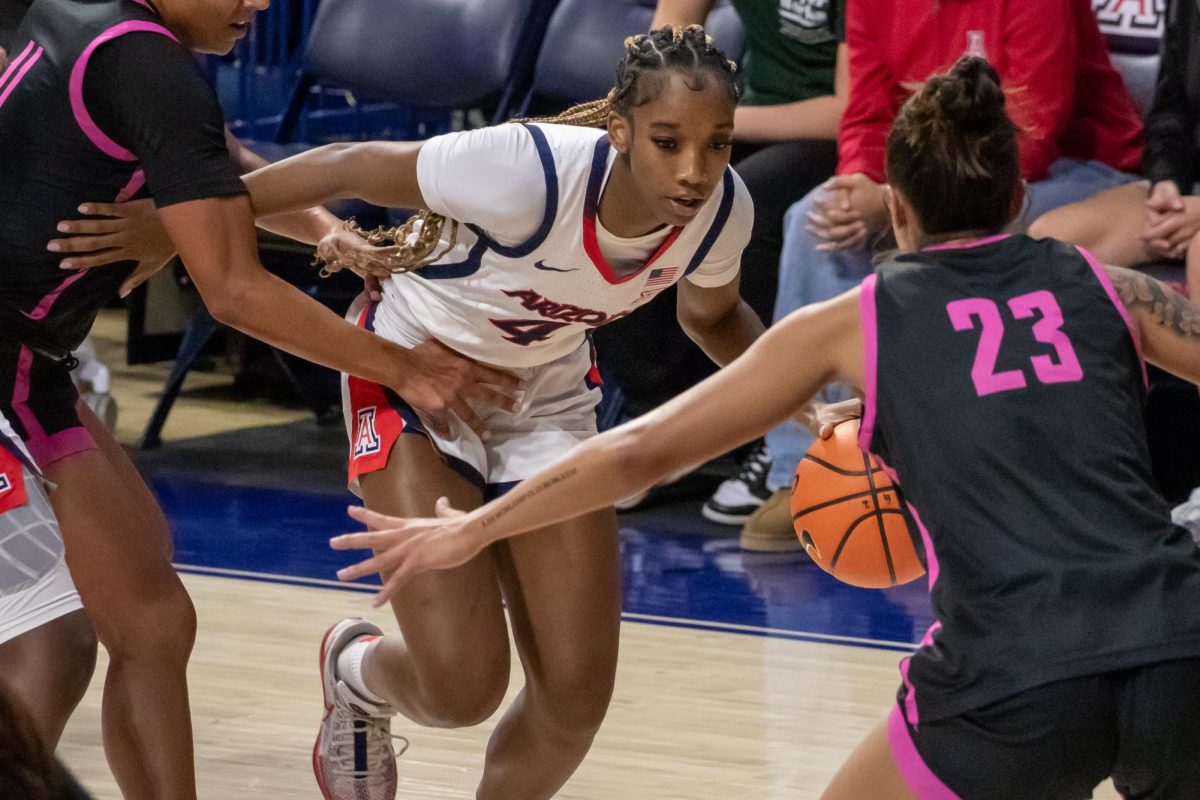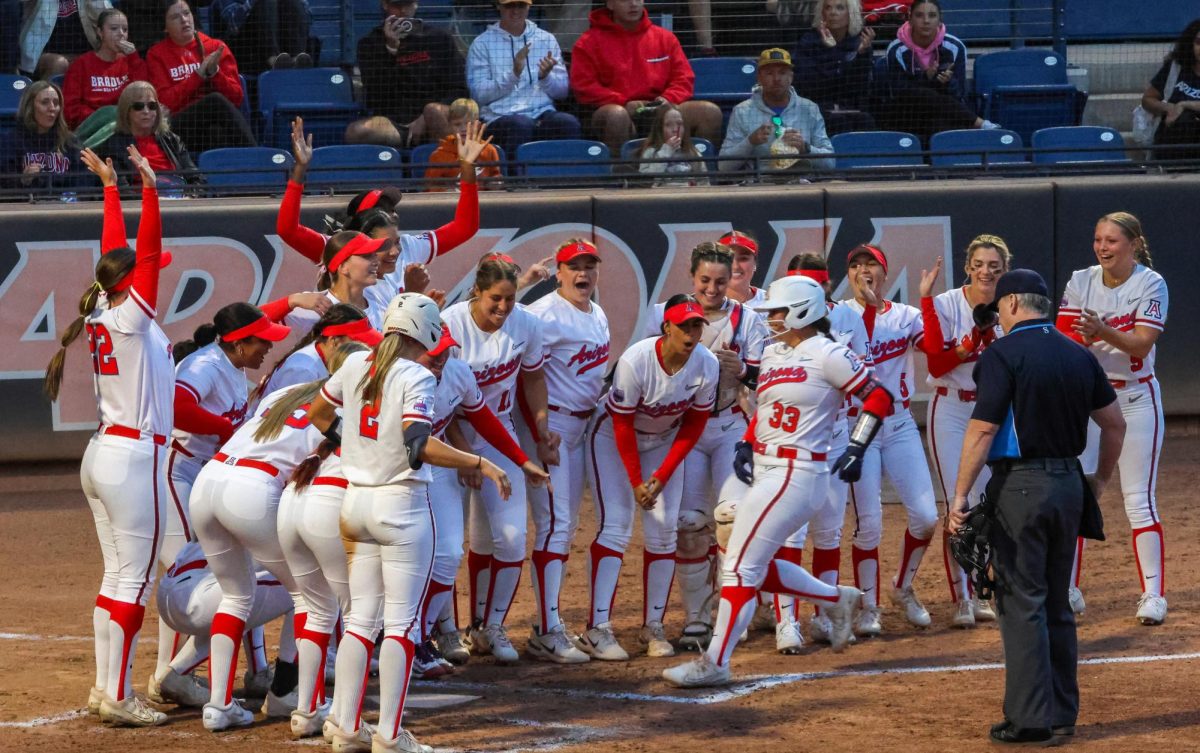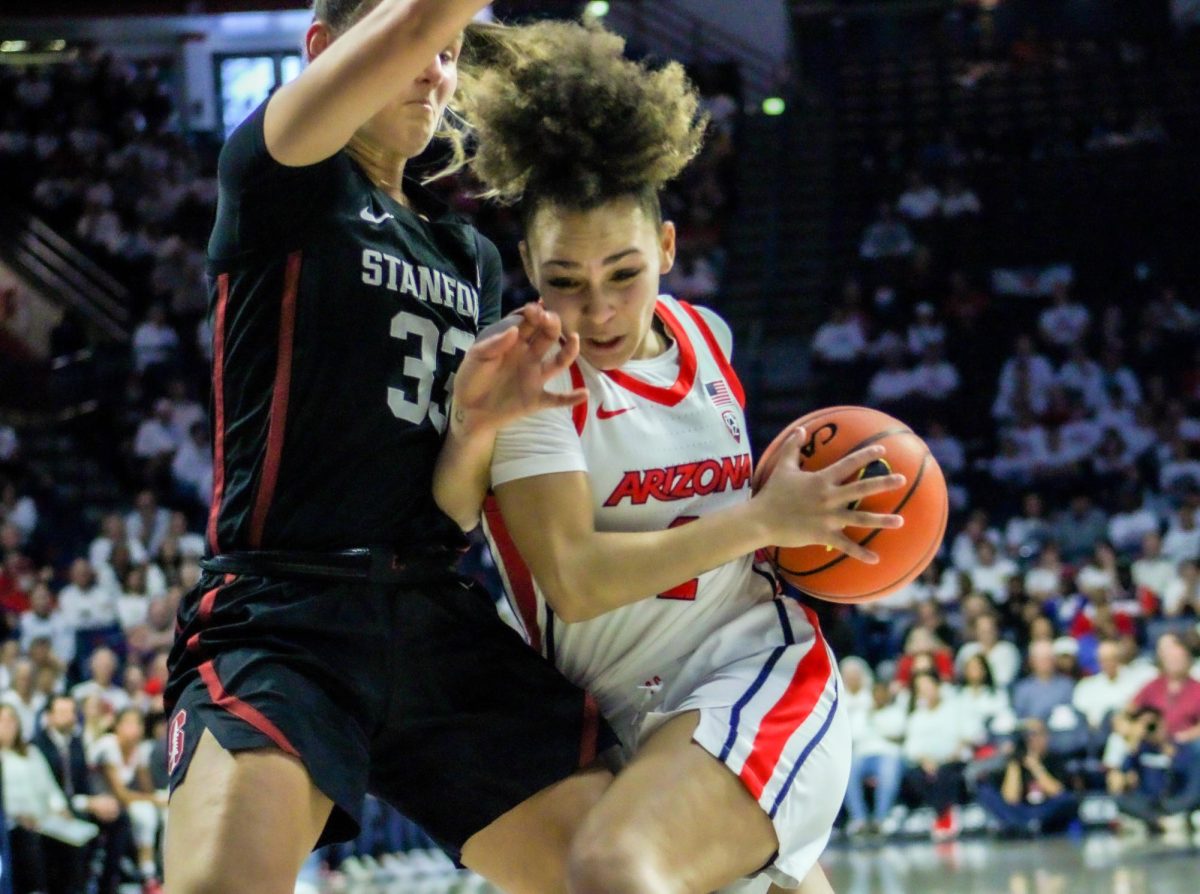Fans and students walk by the new Ginny L. Clements Academic Center on the south side of Enke Drive every single day. Few know what goes on behind the scenes in the hustle and bustle inside the CATS Academics building.
“We’ve had amazing people and really good programs prior to this new facility,” said John Mosbach, director for CATS Academics. “It’s now having the space to execute those programs to the level that we can in this space. We have everyone under one roof, which makes it a one-stop shop for students with no distractions.”
Mosbach and his team have continued the success of Arizona Wildcat greats Rocky LaRose, Mary Roby and Cedric Dempsey. The Commitment to Athletes Total Success (C.A.T.S.) provides student athletes with the academic assistance and life skills to walk away with a job after graduation.
“We try to impart on them from the first day they get here doing a resume, getting involved, gaining transferrable skills so when they graduate, they are well prepared,” said Becky Bell, C.A.T.S. Life Skills program director. “We help with resumes, mock interviews, graduate school applications, personal statements, professional development and every day [we] talk to them about preparation and what that looks like.”
All of this and more is why coaches take prospective student athletes on personalized tours of the academic center. It’s why Arizona Athletics partners with the A-Club to put on networking events every semester with Arizona alumni. They want their students to succeed.
“We are the one show in town as far as athletics goes,” Mosbach said. “For this large of a city to get behind the UA, which really filters into how the athletic department lives their day to day. It feels like a family. Everyone feels a part of it.”
For 32 years, Bell has served in various roles in Arizona Athletics. From women’s head tennis coach to associate athletic director, she said she is proud to have watched the C.A.T.S. program evolve over the years.
“We’ve had support from the top all the way down,” Bell said. “Cedric Dempsey started the C.A.T.S. program. What [Mosbach] brought to the table has brought this academics program to a completely new level. It’s unmatched, as far as I’m concerned. It’s a family.”
Along with Dempsey, LaRose also helped found the C.A.T.S. program.
While tutors and life skills coaches can teach the skills, it’s up to the athletes themselves to go out and land the position.
“The lessons that you learn in sport are absolutely applicable to life,” Bell said. “You will have ups and downs, wins and losses so to speak. You will need to bounce back and be resilient.”
The two-story building features tutor rooms, a computer lab and a group study hall area. Before students enter the group study hall area, they walk by four distinct photos of female athletes, which include Tanya Hughes, Whitney Myers, Lacey Nymeyer and Justine Schluntz.
“We are the only school in the country with four NCAA Women of the Year awards,” Bell said. “It’s an award that recognizes one athlete in the country in three areas weighed equally: academics, athletics and extracurricular. That says everything you need to know. That, to me, represents why we are here. That award is the crowning achievement.”
In their four years at the UA, each student athlete has a defining moment in their college careers, the moment that pushes them on the path toward success in the real world.
“That is the most rewarding thing to see a student realize who they can be and what they can do and make that happen,” Bell said. “There is nothing better than to watch that over four years.”
Employers, along with the general population, have noticed. According to a USA Today article, 14 of the last 20 presidents of the United States have been athletes in some capacity.
“The analogy I use is [the students] got to be great athletes because they went above and beyond in their sport,” Bell said. “They stayed late; they got there early. If you are a student athlete, employers want to hire you because of the transferrable skills.”
Tutors know first-hand of the challenges that Division I student athletes face on a daily basis.
“The main misconception is that athletes don’t work hard,” student tutor Courtney Ek said. “They put in many hours a day at workouts and then they have a full-time schedule, on top of finding time to study and get their work done. They really put in a lot of effort.”
While the C.A.T.S. Academics program continues to excel, other schools around the country and the NCAA have shifted their focus onto excellence both on and off the field.
“I think the NCAA is now more than ever needing more resources and intention to life skills and academics,” Mosbach said. “That’s exciting for our staff. The importance to a commitment to athlete’s total success is now more than ever important for our students.”
Follow Matt Wall on Twitter.



